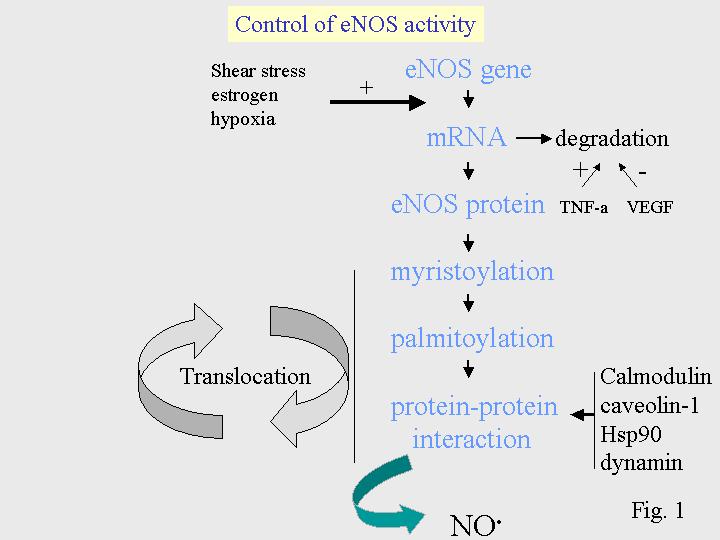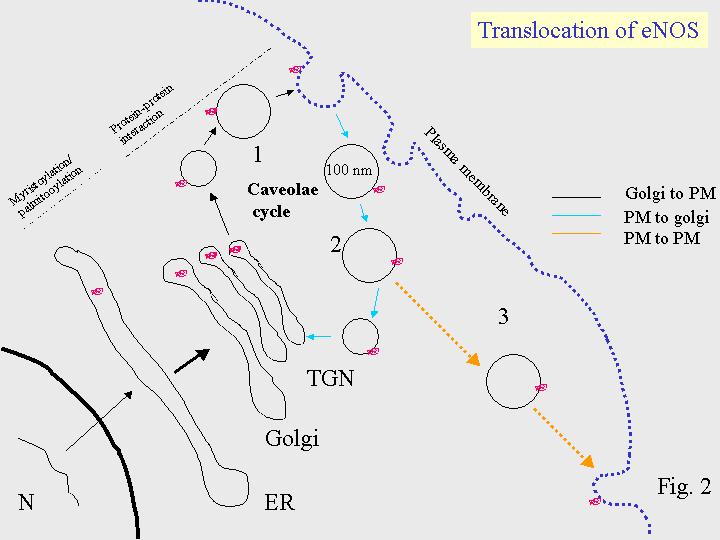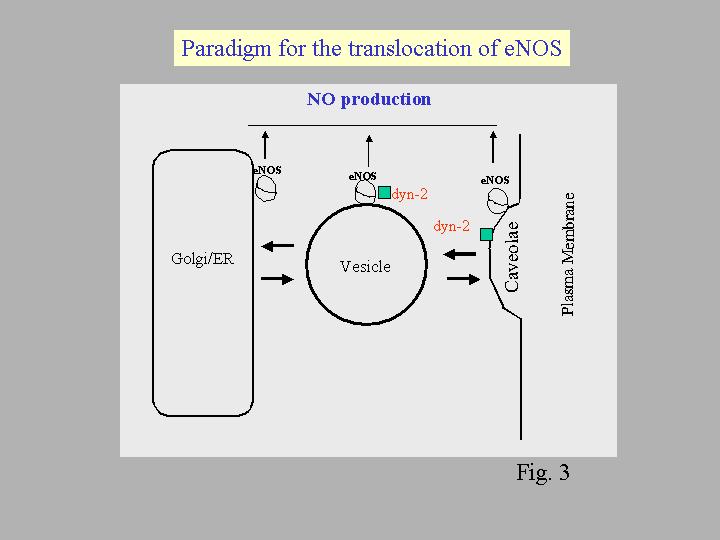|
Sub-cellular
Trafficking
Of Endothelial Nitric Oxide Synthase (eNOS)
Nitric oxide (NO), a vasodilator
molecule produced by the enzyme nitric oxide synthase (NOS), is implicated in
vascular diseases such as hypertension and stroke. A complex control mechanism
has evolved for the endothelial isoform of NOS to produce NO in a well-coordinated
manner in accordance with physiological needs (fig 1). For
example, sub-cellular trafficking of eNOS, including internalization of membrane
pools of eNOS, is believed to contribute to the control of NO production in
response to agonists such as bradykinin (BK). However, the mechanisms of eNOS
internalization and their implications for NO generation are not well understood
(fig 2). Thus, our overall objective is to dissect the pathway
of eNOS internalization under agonist influence and to study its implication
in NO production. It has been shown that specific cellular GTPases such as dynamin
are involved in a vesicle scission and protein trafficking (fig
3). These concepts have propelled us to formulate the central hypothesis
that GTPase proteins may play a pivotal role in the internalization of eNOS
and ensuing NO generation.
Objective
The broad objective is to
investigate the mechanistic aspects of sub-cellular translocation of eNOS and
their implications in NO production with special reference to vascular diseases
Aims
1. BK mediated internalization of plasma membrane pools of eNOS triggers NO
production.
2. BK mediated internalization of eNOS from the plasma membrane is an endocytic
process in which dynamin-2 (dyn-2) is coupled to the formation of clathrin-independent
caveolae.
Techniques
We use cell and molecular
biology techniques including pseudo-confocal imaging, live cell imaging, sub-cellular
fractionation and immuno techniques.



|

